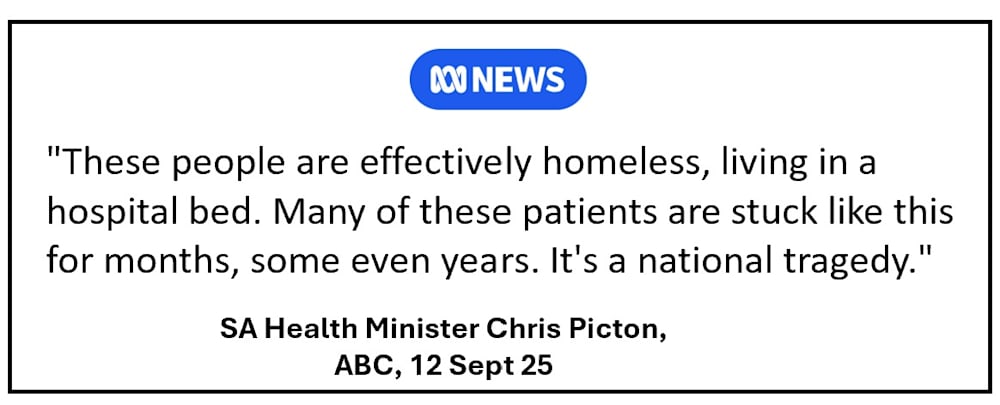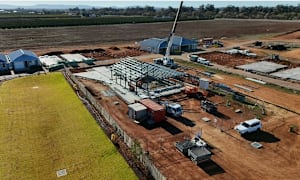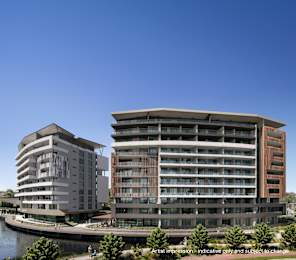Across Australia 2,000 hospital beds now hold 2,000 older Australians getting sicker, waiting for an aged care bed. The cost: $1,500 to $2,000 per day. Solution: a co-located village home at $533 a day.
Everyone in the aged care sector knows Australia is in an expanding crisis. Hospital beds are full; aged care beds are full. As a radical idea, why doesn’t the sector come up with a remedy that it can contribute to the nation positively.
Our thinking: Australia’s 700 co-located retirement villages will have 6,560 village homes vacated each year, or 126 every week. Why doesn’t the sector turn each vacated home over to a human being currently stuck in hospital waiting for age supportive accommodation?
In 16 weeks the 2,000 hospital beds will be cleared.
The co-located aged care home can provide the clinical care, meals and housekeeping until an aged care bed is available, plus Support at Home and Hospital in the Home services can attend if required.

Can it work financially? Here is a quick snapshot
The average two-bed village home today is trading at $690,000. The original purchase price eight years ago was $560,000 based on 3% pa price escalation. The 30% DMF on the ingoing $560,000 is $168,000.
This means the operator has to pay out $392,000 to the departing resident, collected from the next resident.
The operator margin on the new sale is $298,000. The operator will want this cash, meaning between these two figures, the operator is looking for the full $690,000. The hospital resident won’t be able to organise that finance at short notice but the operator can't afford their business and cash model to be hit by this big idea.
The solution is to have the $690,000 lent to the operator at say an interest cost of 6% pa, or $41,400 over 12 months, which is $113 per day.
This $690,000 can be funded by the Federal or State Governments, or a bank with government backing.
Accountants StewartBrown tell us the Federal Government pays the residential Direct Care Supplement at $300 per day, Everyday Living at $82 per day and Catering $38. The total $420 to provide care and support into the village home from the co-located aged care home across the garden.
Add the interest cost of $113 to generate a daily cost of $533 (with no contribution from the new village resident – perhaps they can pay the weekly village service fee averaged at $150).
Let's consider giving the village operator a 50% bonus of $250 a day for administration and regular turnover of the home, making it $750 in cost per day – 50% to 60% less than the current $1,500 to $2,000 a day it costs State and Federal Governments for the hospital bed.
More importantly, it is a far better outcome for the current hospital resident; confined to a hospital bed deconditions an older person mentally and physically, fast. Even a few days in hospital when weak is dangerous to infections.
We as a nation have to get them out
Given all hospitals are full, the 2,000 occupied beds also means emergency and elective surgery patients can’t get beds. 5,000 hours of ambulance ramping is also common every month in every state (including WA). This creates bad outcomes.
With 2,000 hospital beds being the equivalent of four metropolitan hospitals, which can’t get built at present, this fast solution can be the aged care sector’s gift to the nation.
This is our idea. What will the 2,000 Australians marooned in hospital and their families think of it? What will hospital staff think of it? What do you think of it?
Postscript: we delve more deeply on the financials of this proposal with more wins, and how it can work, in the next issue of SATURDAY 25 October, available by subscription HERE.











